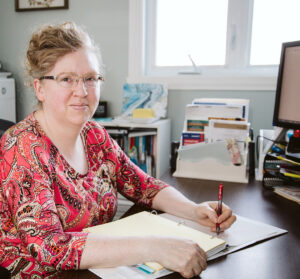I often find myself in the middle of two extremes. I’m not an optimist, so I don’t plan a picnic without checking the weather forecast. But I’m also not a pessimist, so I don’t think it’s going to rain every time I plan an outdoor activity. I’M A REALIST: I carry an umbrella if there’s at least a 20% chance of rain.
 So what does rain have to do with translation? Well, when it comes to learning how to translate, again I find myself in the middle of two extremes.
So what does rain have to do with translation? Well, when it comes to learning how to translate, again I find myself in the middle of two extremes.
- Extreme #1: The general public seems to think that anyone who speaks two languages should be able to do written translation easily… or that it’s acceptable to just use Google Translate! (To find out why that’s dangerous, see my blog post called Translation Myth #1.)
- Extreme #2: Many translation professors and scholars would tell you emphatically that the only way to learn how to translate well is to attend a 3-4 year university program.
I believe there is an acceptable middle ground, and I have experience on both sides.
- I originally tried to do written translation with just my bilingual skills, and not only was it a dismal failure, but it was incredibly frustrating! I lacked the tools and knowledge of principles and procedures that were necessary to create a good translation.
- So I decided to do a BA in Translation while in my forties, and plunged into learning almost 100 translation techniques over a few years. It was often overwhelming, and it was very hard to remember so many techniques while I was translating. I felt like we never caught the big picture idea of what makes a good translation; we were drowning in the details.
Ironically, it was through doing masters and doctoral research with my nonprofit translation team (mostly volunteers who did NOT have university training) that I finally saw the “big picture” needed to be a good translator. I was able to identify three keys to a quality translation: Fidelity, Readability and Conformity, as well as 9 best practices that support them.
Now that’s a lot easier to remember than 100 translation techniques! I started teaching these concepts to members of my nonprofit translation team, and watched their translation quality increase. And I have also taught the same concepts to hundreds of university translation students, to help them get the big picture about translation quality before they dive into details.
So I’m not an optimist about translation skills: I am aware that a bilingual person needs training in order to learn how to translate well. But I’m also not a pessimist: I don’t believe that university is the only place you can learn translation.
I’M A REALIST: Not everyone has the time or money to go to university, especially if they will be doing volunteer translation for a nonprofit, or want to start a side hustle in translation rather than doing it as a full-time career.
That’s why I created an alternate method of training translators that is accelerated and affordable. I’ve been perfecting it over the last year, and this online training is almost ready! Stay tuned throughout July for more information.
Have a great day!
Liane 🙂
www.LearnTranslation.com
www.NonprofitTranslation.org
